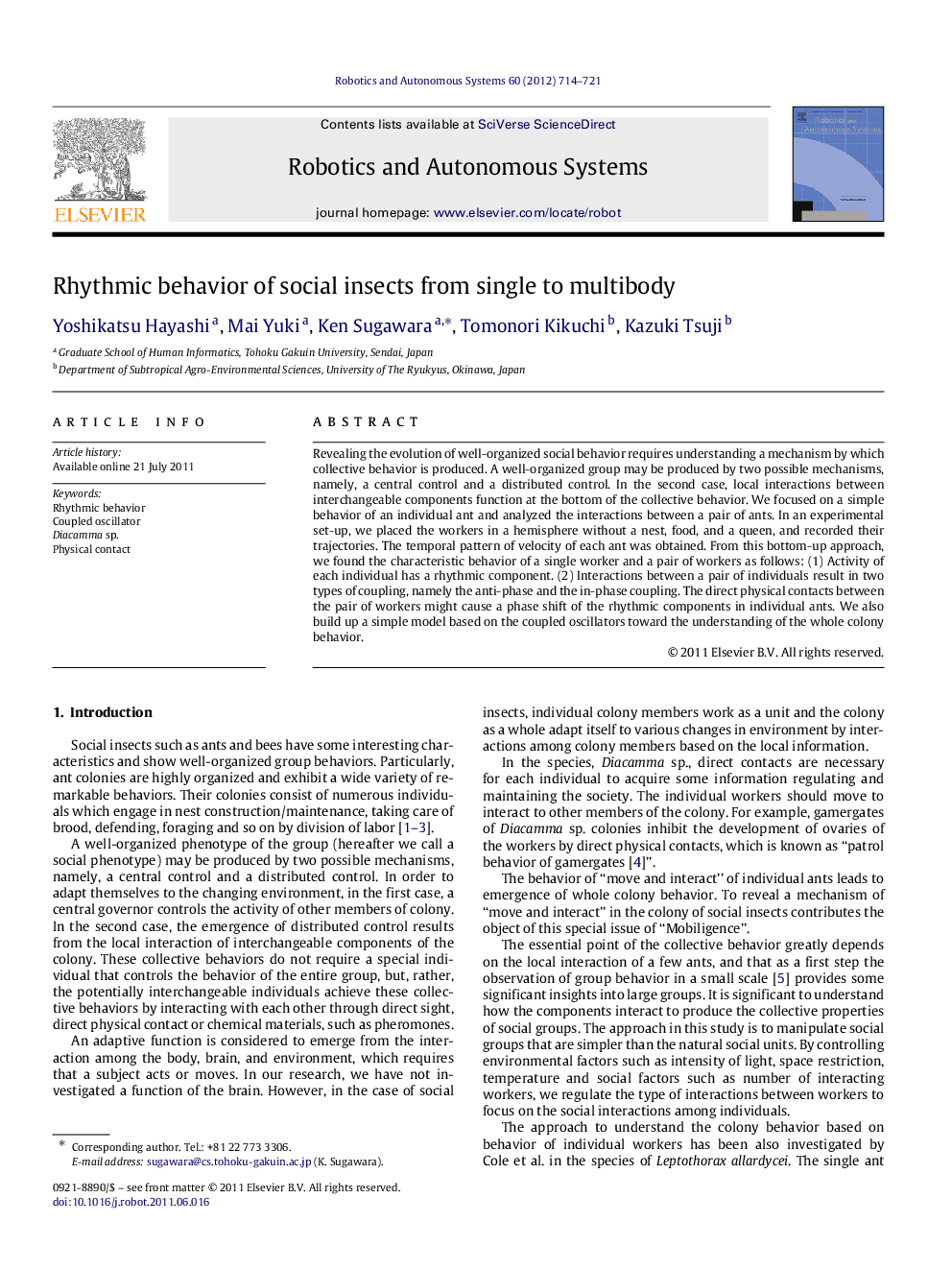| Article ID | Journal | Published Year | Pages | File Type |
|---|---|---|---|---|
| 411994 | Robotics and Autonomous Systems | 2012 | 8 Pages |
Revealing the evolution of well-organized social behavior requires understanding a mechanism by which collective behavior is produced. A well-organized group may be produced by two possible mechanisms, namely, a central control and a distributed control. In the second case, local interactions between interchangeable components function at the bottom of the collective behavior. We focused on a simple behavior of an individual ant and analyzed the interactions between a pair of ants. In an experimental set-up, we placed the workers in a hemisphere without a nest, food, and a queen, and recorded their trajectories. The temporal pattern of velocity of each ant was obtained. From this bottom-up approach, we found the characteristic behavior of a single worker and a pair of workers as follows: (1) Activity of each individual has a rhythmic component. (2) Interactions between a pair of individuals result in two types of coupling, namely the anti-phase and the in-phase coupling. The direct physical contacts between the pair of workers might cause a phase shift of the rhythmic components in individual ants. We also build up a simple model based on the coupled oscillators toward the understanding of the whole colony behavior.
► We analyzed a simple behavior of an individual ant and a pair of ants. ► An activity of each individual has a rhythmic component. ► Interactions between a pair of individuals cause an anti-phase and an in-phase coupling. ► We propose a simple model based on the coupled oscillators.
